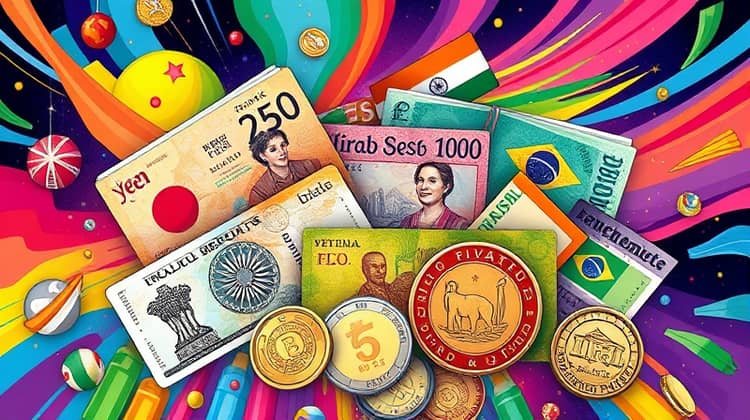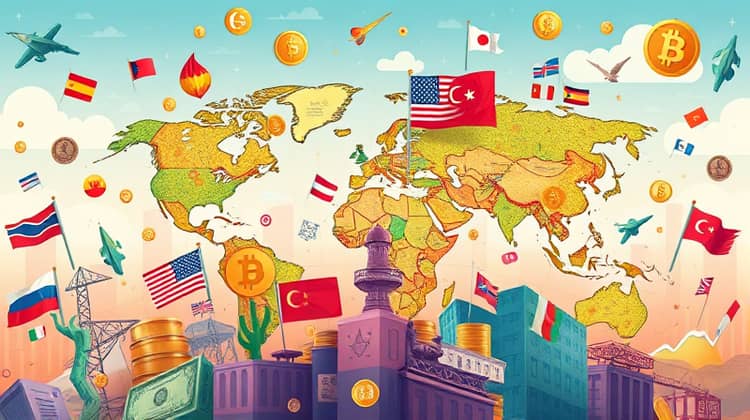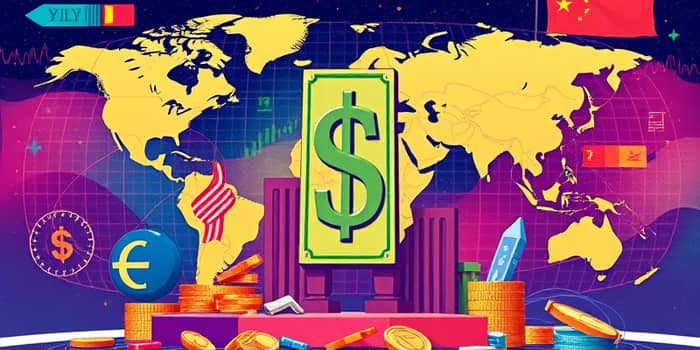In the ever-evolving global economy, the strength and stability of national currencies play a crucial role in international trade and finance. Among these currencies, the U.S. dollar has long held a position of power, underpinning many global transactions and serving as the world's primary reserve currency. However, emerging powers and alternative currencies are starting to challenge this dominance, raising questions about the future of currency power. This article explores the historical dominance of the dollar, the factors that contribute to its strength, and the potential rivals vying for supremacy.
As we delve into the intricate dynamics of currency strength, we will examine various players in the global financial landscape, notably the Euro and the Chinese Yuan, as well as other currencies that are gaining traction. Additionally, we will consider the challenges that the dollar faces, both from established competitors and novel economic forces, while speculating on what the future may hold for global currency power.
Historical Dominance of the Dollar

The United States dollar has been the world's dominant currency since the end of World War II, during which time the United States emerged as a global superpower. This status was solidified with the establishment of the Bretton Woods system in 1944, which set the stage for the dollar's role as the world's primary reserve currency, backed by gold. The trust in U.S. economic stability and military power helped cement the dollar's dominance in global trade and finance.
Over the decades, the dollar's role has remained unchallenged due to the size and strength of the U.S. economy. As multinational corporations and foreign governments continued to prefer using the dollar for international transactions, its status became self-perpetuating. The sheer volume of dollar-denominated trades, investments, and reserves led to a network effect that reinforced the dollar's supremacy.
However, the 21st century has brought a host of potential challenges to this dominance, including rising economic powers and shifts in global trade dynamics that could impact the dollar's preeminence. The question now is whether these changes will lead to a more multipolar currency system or if the dollar can continue to maintain its stronghold.
Factors Contributing to the Dollar’s Strength

Several factors contribute to the resilience and strength of the U.S. dollar in the global economy. One of the primary reasons is the size of the U.S. economy, which remains the largest in the world. This economic scale provides confidence to investors and countries that hold dollar reserves, ensuring that they can readily engage in trade and financial transactions without fear of depreciation or instability.
Another key factor is the depth and liquidity of U.S. financial markets. The dollar is the most widely traded currency, making it easier for parties engaged in international trade to convert their currencies into dollars quickly and with minimal friction. Additionally, U.S. treasuries are viewed as one of the safest investments globally, providing further incentives for foreign governments and institutional investors to hold dollars as a part of their reserves.
Lastly, U.S. fiscal and monetary policy plays a significant role in maintaining dollar strength. Decisions made by the Federal Reserve regarding interest rates and inflation control have implications for global liquidity and investor confidence, influencing the dollar's status as a reserve currency. This perception of stability further cements the dollar's role in the global economy.
- The size of the U.S. economy
- Depth and liquidity of U.S. financial markets
- Perception of U.S. fiscal and monetary stability
The Euro: A Contender for Power

While the dollar has stood the test of time, the Euro emerged in the late 20th century as a significant contender for the title of the world's top currency. Launched in 1999, the Euro was meant to unify Europe's economy and provide stability for its member states, allowing for easier trade and investment within the Eurozone. It quickly gained traction and has since become the second most traded currency worldwide.
Despite its initial success, the Euro has faced challenges, particularly during the European debt crisis in the early 2010s. Economic disparities among member nations and differing fiscal policies created tensions that tested the Euro's stability. Nevertheless, the Euro remains a strong alternative to the dollar, with many countries holding Euros as part of their foreign exchange reserves.
As Europe continues to integrate its economies and strengthen its financial institutions, the Euro could potentially pose a greater challenge to dollar supremacy. However, ongoing political and economic uncertainties within the Eurozone continue to hinder its ability to fully dethrone the dollar as the leading global currency.
The Rise of the Chinese Yuan

In recent years, the Chinese yuan has emerged as a potential challenger to the dollar and Euro on the global stage. China's rapid economic growth and increased international trade have led to greater acceptance of the yuan in global markets. Initiatives such as the Belt and Road Initiative have also encouraged more countries to use the yuan for trade agreements, further expanding its reach.
The Chinese government has actively promoted the yuan’s internationalization, allowing it to be used in cross-border transactions and foreign investments. With the People’s Bank of China introducing more flexibility in its exchange rates, more countries are starting to view the yuan as a viable alternative to traditional currencies.
However, the yuan's rise is fraught with challenges, including concerns over capital controls, lack of transparency in China's financial system, and the U.S.-China trade relationship, which could impact its acceptance and stability in global markets. Despite these hurdles, the yuan remains a significant player in discussions about the future of global currency power.
Other Currencies in the Mix

While the dollar, Euro, and yuan dominate discussions of currency power, there are other currencies that are not to be overlooked. The Japanese yen, British pound, and Swiss franc remain popular and stable currencies used in international trade.
In addition to these, emerging market currencies, like the Indian rupee, Brazilian real, and others, are gradually gaining importance as these economies develop. Countries are diversifying their reserves to include a broader mix of currencies as they seek to hedge against dollar volatility.
- Japanese Yen
- British Pound
- Swiss Franc
- Indian Rupee
- Brazilian Real
Challenges to the Dollar’s Dominance

Despite its long-standing dominance, the dollar is not invulnerable to challenges. Various geopolitical and economic factors are beginning to reshape the global currency landscape, creating openings for other currencies to gain influence. The increasing push for de-dollarization among countries seeking to reduce their dependency on the dollar has sparked notable shifts in trade practices, particularly among nations under U.S. sanctions.
Furthermore, technological advancements, such as the emergence of cryptocurrencies and central bank digital currencies (CBDCs), present new alternatives to traditional fiat currencies. Some countries are exploring the potential of digital currencies to streamline cross-border payments and financial transactions, which could further undermine the dollar’s position as the dominant choice for international trade.
Lastly, economic uncertainties stemming from U.S. fiscal policies, inflation rates, and political divisions could lead to fluctuations in dollar value and investor confidence, creating room for competition from established and emerging currencies alike.
The Future of Currency Power

The future of currency power remains uncertain, with numerous factors at play that could influence the positions of various currencies. The dollar has proven resilient, but continued challenges from both established currencies, such as the Euro and the pound, as well as emerging contenders like the yuan, suggest that shifts are on the horizon. As global trade evolves, the landscape of currency power may also change.
Ultimately, the interactions between economic policies, geopolitical dynamics, and technological innovations will play significant roles in determining which currencies will emerge as leaders in the international financial system. As we move further into the 21st century, one thing is clear: the conversation surrounding currency power is only beginning, setting the stage for an exciting and dynamic future.










